Publications
All my publications are available open-access (see DOI or URL).
2025
- Ecol. Sol. Evid.
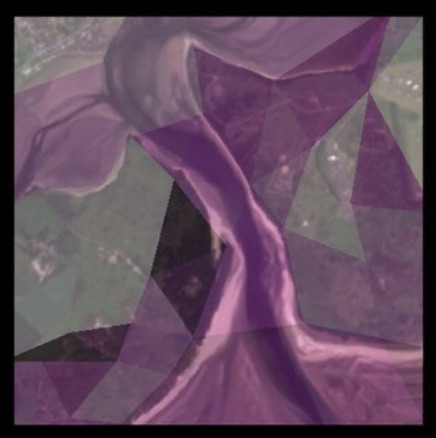 Monitoring protected areas by integrating machine learning, remote sensing and citizen scienceThijs L Plas, David G Alexander, and Michael JO PocockEcological Solutions and Evidence, 2025
Monitoring protected areas by integrating machine learning, remote sensing and citizen scienceThijs L Plas, David G Alexander, and Michael JO PocockEcological Solutions and Evidence, 20251. Protected Areas (PAs) are central to addressing the world’s biodiversity crisis, but their effectiveness for conservation varies. Therefore, high-resolution habitat condition monitoring is needed to evaluate their individual impacts. Critically, monitoring must efficiently scale to cover large areas and be conducted at regular intervals. 2. Remote sensing (RS) data and citizen-science (CS) species data are two sources of global data available for habitat condition monitoring, and integrating these could provide high-resolution, scalable biodiversity data required for the detailed monitoring of PAs. However, integrating these presents four data analysis challenges: RS data are large and complex, large-scale CS data are biased, integrating RS and CS data is non-trivial, and fine-tuning to local priorities is required. 3. Machine Learning (ML) methods can address these challenges: geospatial foundation models for RS data can compress large data volumes, ML de-biasing techniques can improve CS data quality, deep learning and multimodal ML can help to integrate RS and CS data, and transfer learning can fine-tune models to local priorities. Here, we review these techniques and discuss how they can be applied to habitat condition monitoring. 4. Practical implication. Together, these advances in ML can deliver high-resolution biodiversity data that can be tailored to local priorities, enabling the efficient monitoring of PAs at scale, with the potential to support spatial land use decision-making.
- arXiv
 Towards deployment-centric multimodal AI beyond vision and languageXianyuan Liu, Jiayang Zhang, Shuo Zhou, and 45 more authorsarXiv, 2025
Towards deployment-centric multimodal AI beyond vision and languageXianyuan Liu, Jiayang Zhang, Shuo Zhou, and 45 more authorsarXiv, 2025Multimodal artificial intelligence (AI) integrates diverse types of data via machine learning to improve understanding, prediction, and decision-making across disciplines such as healthcare, science, and engineering. However, most multimodal AI advances focus on models for vision and language data, while their deployability remains a key challenge. We advocate a deployment-centric workflow that incorporates deployment constraints early to reduce the likelihood of undeployable solutions, complementing data-centric and model-centric approaches. We also emphasise deeper integration across multiple levels of multimodality and multidisciplinary collaboration to significantly broaden the research scope beyond vision and language. To facilitate this approach, we identify common multimodal-AI-specific challenges shared across disciplines and examine three real-world use cases: pandemic response, self-driving car design, and climate change adaptation, drawing expertise from healthcare, social science, engineering, science, sustainability, and finance. By fostering multidisciplinary dialogue and open research practices, our community can accelerate deployment-centric development for broad societal impact.
- CVPRW
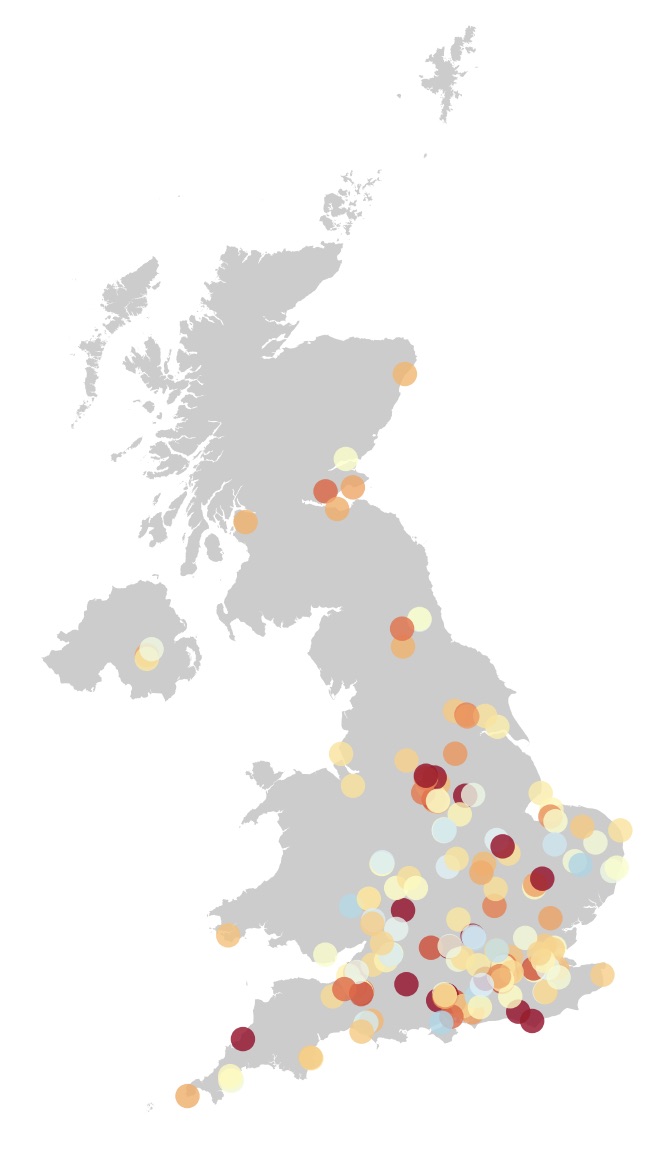 Predicting butterfly species presence from satellite imagery using soft contrastive regularisationThijs Plas, Stephen Law, and Michael JO PocockIn Proceedings of the Computer Vision and Pattern Recognition Conference (CVPR) Workshops, Jun 2025
Predicting butterfly species presence from satellite imagery using soft contrastive regularisationThijs Plas, Stephen Law, and Michael JO PocockIn Proceedings of the Computer Vision and Pattern Recognition Conference (CVPR) Workshops, Jun 2025The growing demand for scalable biodiversity monitoring methods has fuelled interest in remote sensing data, due to its widespread availability and extensive coverage. Traditionally, the application of remote sensing to biodiversity research has focused on mapping and monitoring habitats, but with increasing availability of large-scale citizen-science wildlife observation data, recent methods have started to explore predicting multi-species presence directly from satellite images. This paper presents a new data set for predicting butterfly species presence from satellite data in the United Kingdom. We experimentally optimise a Resnet-based model to predict multi-species presence from 4-band satellite images, and find that this model especially outperforms the mean rate baseline for locations with high species biodiversity. To improve performance, we develop a soft, supervised contrastive regularisation loss that is tailored to probabilistic labels (such as species-presence data), and demonstrate that this improves prediction accuracy. In summary, our new data set and contrastive regularisation method contribute to the open challenge of accurately predicting species biodiversity from remote sensing data, which is key for efficient biodiversity monitoring.
2024
- Plos CB
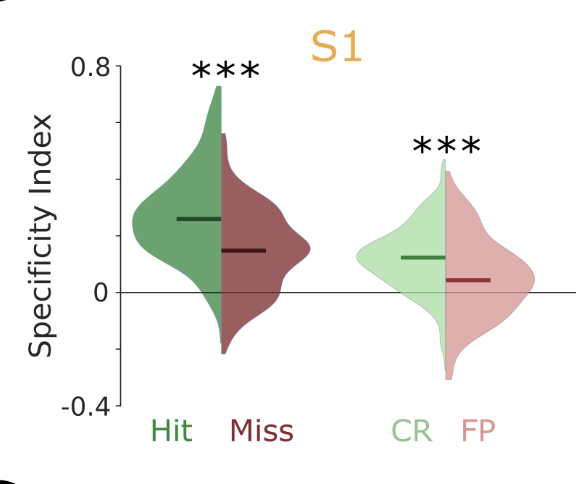 What does the mean mean? A simple test for neuroscienceAlejandro Tlaie, Katharine Shapcott, Thijs L van der Plas, and 7 more authorsPLOS Computational Biology, Jun 2024
What does the mean mean? A simple test for neuroscienceAlejandro Tlaie, Katharine Shapcott, Thijs L van der Plas, and 7 more authorsPLOS Computational Biology, Jun 2024Trial-averaged metrics, e.g. tuning curves or population response vectors, are a ubiquitous way of characterizing neuronal activity. But how relevant are such trial-averaged responses to neuronal computation itself? Here we present a simple test to estimate whether average responses reflect aspects of neuronal activity that contribute to neuronal processing. The test probes two assumptions implicitly made whenever average metrics are treated as meaningful representations of neuronal activity: 1. Reliability: Neuronal responses repeat consistently enough across trials that they convey a recognizable reflection of the average response to downstream regions. 2. Behavioural relevance: If a single-trial response is more similar to the average template, it is more likely to evoke correct behavioural responses. We apply this test to two data sets: (1) Two-photon recordings in primary somatosensory cortices (S1 and S2) of mice trained to detect optogenetic stimulation in S1; and (2) Electrophysiological recordings from 71 brain areas in mice performing a contrast discrimination task. Under the highly controlled settings of Data set 1, both assumptions were largely fulfilled. In contrast, the less restrictive paradigm of Data set 2 met neither assumption. Simulations predict that the larger diversity of neuronal response preferences, rather than higher cross-trial reliability, drives the better performance of Data set 1. We conclude that when behaviour is less tightly restricted, average responses do not seem particularly relevant to neuronal computation, potentially because information is encoded more dynamically. Most importantly, we encourage researchers to apply this simple test of computational relevance whenever using trial-averaged neuronal metrics, in order to gauge how representative cross-trial averages are in a given context.
- ICLR ML4RS
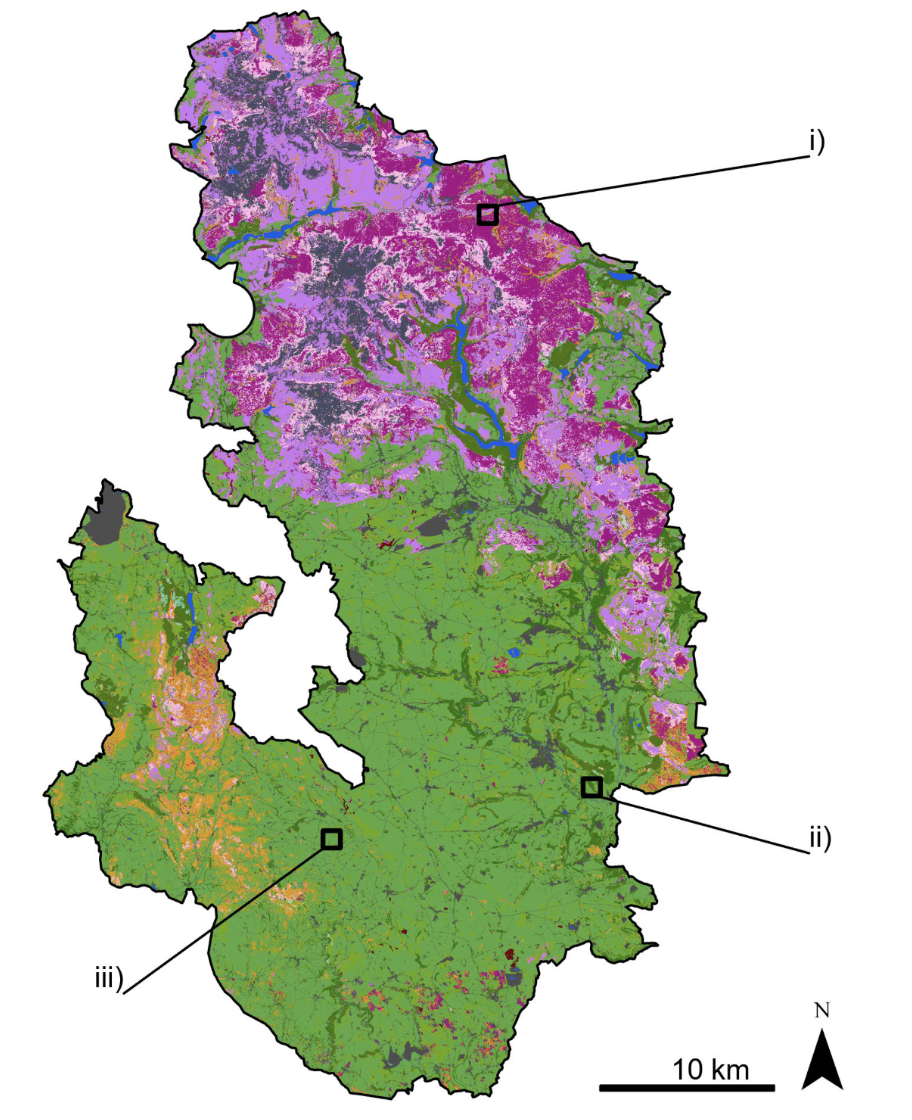 Multi-stage semantic segmentation to map small and sparsely distributed habitatsThijs L van der Plas, Simon T Geikie, David G Alexander, and 1 more authorICLR Machine Learning 4 Remote Sensing Workshop Proceedings, Jun 2024
Multi-stage semantic segmentation to map small and sparsely distributed habitatsThijs L van der Plas, Simon T Geikie, David G Alexander, and 1 more authorICLR Machine Learning 4 Remote Sensing Workshop Proceedings, Jun 2024Land cover (LC) maps are used extensively for nature conservation and landscape planning, but low spatial resolution and coarse LC schemes typically limit their applicability to large, broadly-defined habitats. In order to target smaller and more specific habitats, LC maps must be developed at high resolution and fine class detail, using methods that can handle strong class imbalance. In this work, we present a new aerial photography data set with 12.5 cm ground resolution, annotated using a detailed, hierarchical land cover schema. We show that splitting up the semantic segmentation process into multiple stages critically improves the predictive performance, in particular by including the rare LC classes. We then apply this method to create a new LC map of the Peak District National Park (1439 km2), England, at 12.5 cm resolution.
2023
- eLife
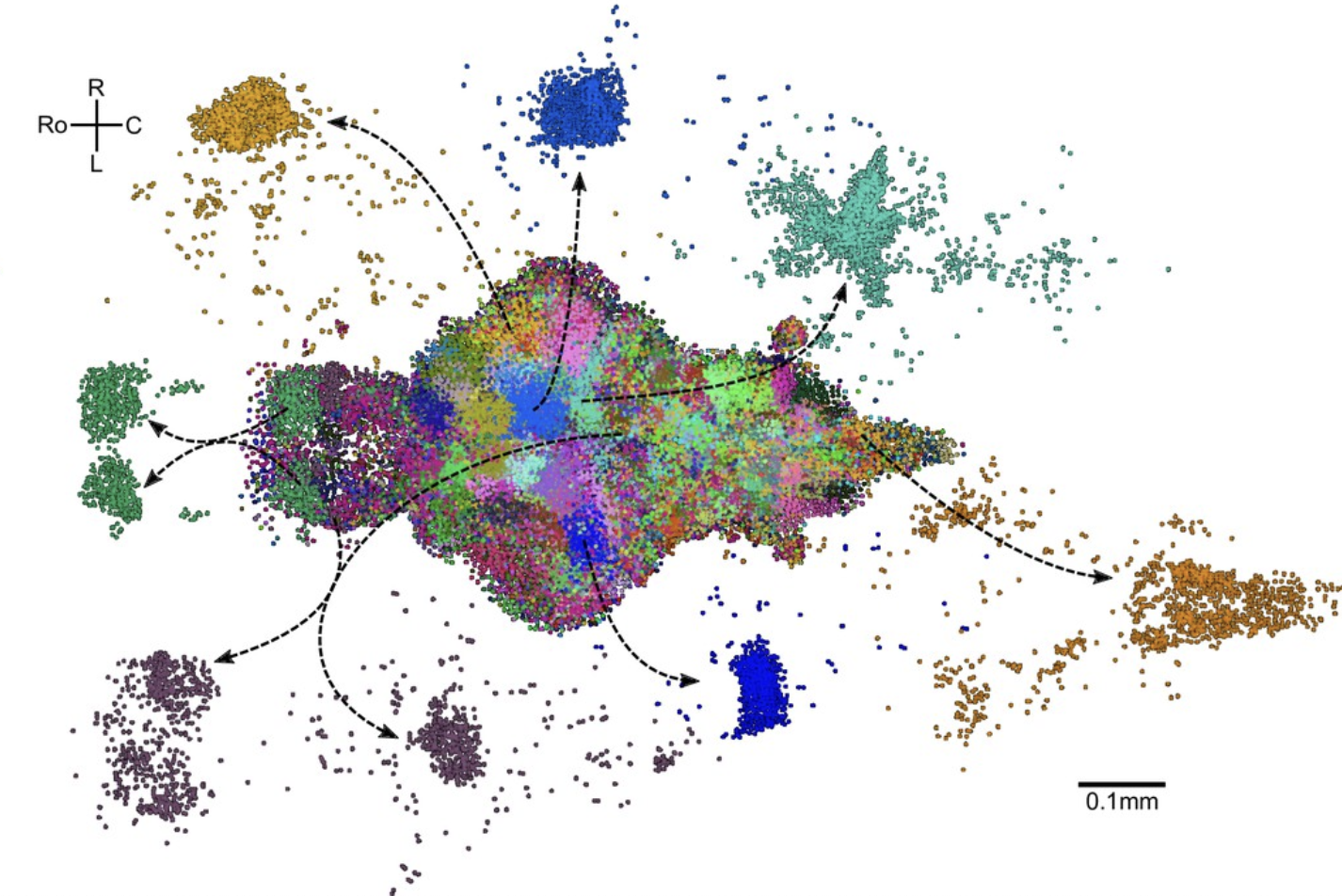 Neural assemblies uncovered by generative modeling explain whole-brain activity statistics and reflect structural connectivityThijs L van der Plas*, Jérôme Tubiana*, Guillaume Le Goc, and 6 more authorseLife, Jun 2023
Neural assemblies uncovered by generative modeling explain whole-brain activity statistics and reflect structural connectivityThijs L van der Plas*, Jérôme Tubiana*, Guillaume Le Goc, and 6 more authorseLife, Jun 2023Awarded the Reproducibility Award at the 2023 BioInference conference.
Patterns of endogenous activity in the brain reflect a stochastic exploration of the neuronal state space that is constrained by the underlying assembly organization of neurons. Yet, it remains to be shown that this interplay between neurons and their assembly dynamics indeed suffices to generate whole-brain data statistics. Here, we recorded the activity from ∼40,000 neurons simultaneously in zebrafish larvae, and show that a data-driven generative model of neuron-assembly interactions can accurately reproduce the mean activity and pairwise correlation statistics of their spontaneous activity. This model, the compositional Restricted Boltzmann Machine (cRBM), unveils ∼200 neural assemblies, which compose neurophysiological circuits and whose various combinations form successive brain states. We then performed in silico perturbation experiments to determine the interregional functional connectivity, which is conserved across individual animals and correlates well with structural connectivity. Our results showcase how cRBMs can capture the coarse-grained organization of the zebrafish brain. Notably, this generative model can readily be deployed to parse neural data obtained by other large-scale recording techniques.
- Nat. Neuro.
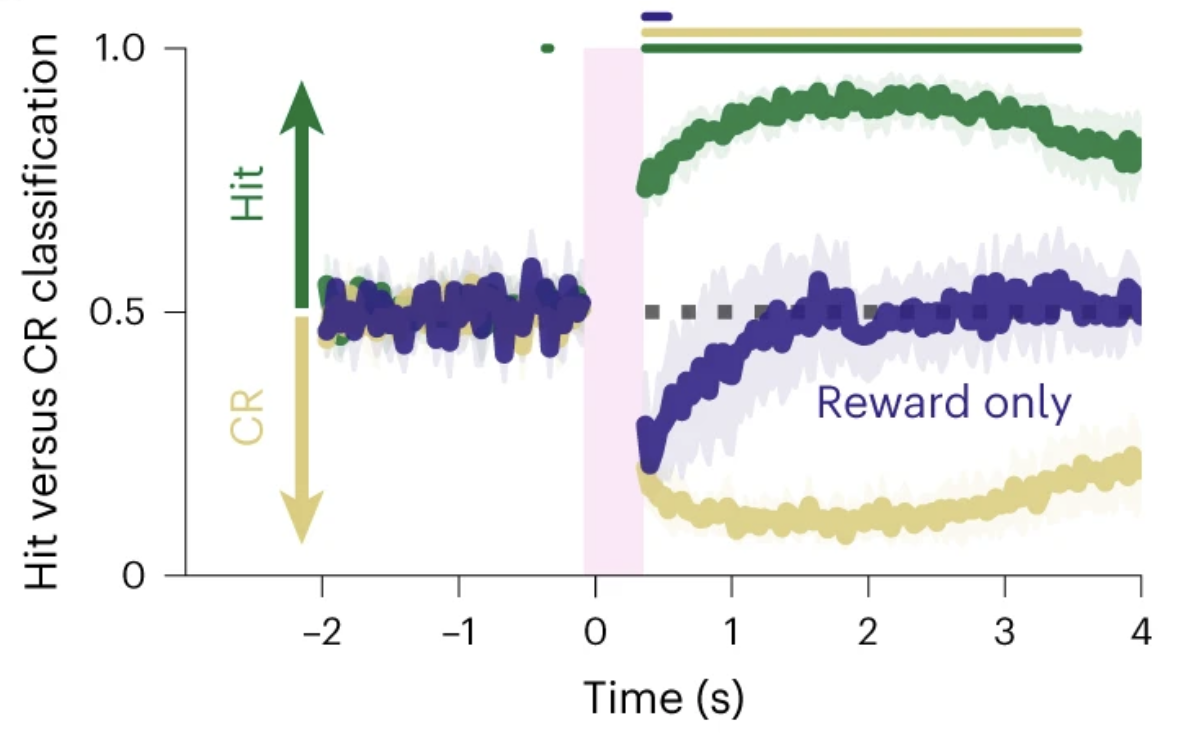 Propagation of activity through the cortical hierarchy and perception are determined by neural variabilityJames M Rowland*, Thijs L van der Plas*, Matthias Loidolt*, and 6 more authorsNature Neuroscience, Jun 2023
Propagation of activity through the cortical hierarchy and perception are determined by neural variabilityJames M Rowland*, Thijs L van der Plas*, Matthias Loidolt*, and 6 more authorsNature Neuroscience, Jun 2023Brains are composed of anatomically and functionally distinct regions performing specialized tasks, but regions do not operate in isolation. Orchestration of complex behaviors requires communication between brain regions, but how neural dynamics are organized to facilitate reliable transmission is not well understood. Here we studied this process directly by generating neural activity that propagates between brain regions and drives behavior, assessing how neural populations in sensory cortex cooperate to transmit information. We achieved this by imaging two densely interconnected regions—the primary and secondary somatosensory cortex (S1 and S2)—in mice while performing two-photon photostimulation of S1 neurons and assigning behavioral salience to the photostimulation. We found that the probability of perception is determined not only by the strength of the photostimulation but also by the variability of S1 neural activity. Therefore, maximizing the signal-to-noise ratio of the stimulus representation in cortex relative to the noise or variability is critical to facilitate activity propagation and perception.
- Rem. Sens.
 Multi-stage semantic segmentation quantifies fragmentation of small habitats at a landscape scaleThijs L van der Plas, Simon T Geikie, David G Alexander, and 1 more authorRemote Sensing, Jun 2023
Multi-stage semantic segmentation quantifies fragmentation of small habitats at a landscape scaleThijs L van der Plas, Simon T Geikie, David G Alexander, and 1 more authorRemote Sensing, Jun 2023Awarded a Best Poster Award at the IADF 2024 Computer Vision for Earth Observation summer school.
Land cover (LC) maps are used extensively for nature conservation and landscape planning, but low spatial resolution and coarse LC schemas typically limit their applicability to large, broadly defined habitats. In order to target smaller and more-specific habitats, LC maps must be developed at high resolution and fine class detail using automated methods that can efficiently scale to large areas of interest. In this work, we present a Machine Learning approach that addresses this challenge. First, we developed a multi-stage semantic segmentation approach that uses Convolutional Neural Networks (CNNs) to classify LC across the Peak District National Park (PDNP, 1439 km2) in the UK using a detailed, hierarchical LC schema. High-level classes were predicted with 95% accuracy and were subsequently used as masks to predict low-level classes with 72% to 92% accuracy. Next, we used these predictions to analyse the degree and distribution of fragmentation of one specific habitat—wet grassland and rush pasture—at the landscape scale in the PDNP. We found that fragmentation varied across areas designated as primary habitat, highlighting the importance of high-resolution LC maps provided by CNN-powered analysis for nature conservation.
- D.Phil. thesis
 Neural mechanisms of state-dependent sensory processingThijs L van der PlasJun 2023
Neural mechanisms of state-dependent sensory processingThijs L van der PlasJun 2023Passed D.Phil. viva with no corrections.
A key purpose of the central nervous system is to transform sensation into action. During this process, identical stimuli can cause variable behavioural responses because of changes in the condition – or, state – of the brain. This response variability is a common phenomenon, yet the underlying neural mechanisms of how sensory information differentially interacts with varying network states remain obscure. In this thesis, we consider three such mechanisms in depth: inhibition stabilisation, neural variability and predictive learning. First, we analyse all-optical experiments where we were able to simultaneously record and insert neural activity in somatosensory cortex in vivo. Our results show that population activity is stabilised by inhibition, thereby allowing faint sensory stimulation to be detected and propagated downstream. In mice trained to detect these stimuli, we further observe that the neural variability across neurons modulated their perceptual performance, whereas this effect did not occur during passive stimulation. Therefore, maximising the cortical signal-to-noise ratio of behaviourally relevant stimuli is critical to facilitate activity propagation and perception. Separately, in a study of artificial neural networks, we demonstrate that it is advantageous for networks to continuously predict upcoming sensory information, as this facilitates learning of more complex working memory tasks. This could explain recent experimental findings showing that cortical neurons engage in predictive learning even when reward is absent. In sum, this thesis explores how sensory information interacts with ongoing neural activity in both biological and artificial neural networks, and explains mechanisms that underpin the variability of our behavioural response.
2022
- PMLR
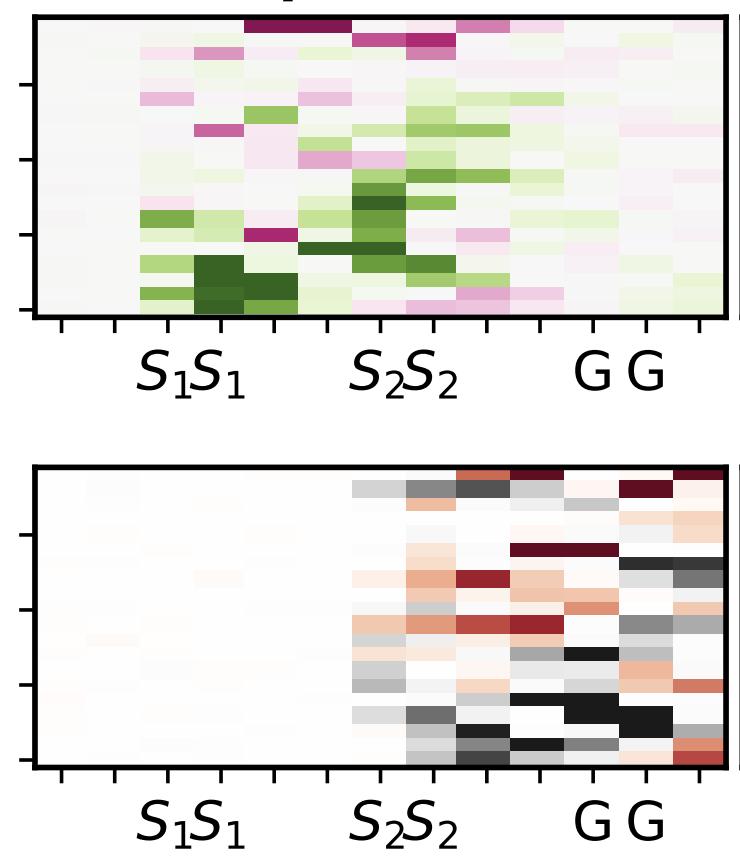 Predictive learning enables neural networks to learn complex working memory tasksThijs L van der Plas, Sanjay G Manohar, and Tim P VogelsProceedings of Machine Learning Research, Jun 2022
Predictive learning enables neural networks to learn complex working memory tasksThijs L van der Plas, Sanjay G Manohar, and Tim P VogelsProceedings of Machine Learning Research, Jun 2022Selected for oral presentation at CoLLAs 2022.
Brains are thought to engage in predictive learning-learning to predict upcoming stimuli-to construct an internal model of their environment. This is especially notable for spatial navigation, as first described by Tolman’s latent learning tasks. However, predictive learning has also been observed in sensory cortex, in settings unrelated to spatial navigation. Apart from normative frameworks such as active inference or efficient coding, what could be the utility of learning to predict the patterns of occurrence of correlated stimuli? Here we show that prediction, and thereby the construction of an internal model of sequential stimuli, can bootstrap the learning process of a working memory task in a recurrent neural network. We implemented predictive learning alongside working memory match-tasks, and networks emerged to solve the prediction task first by encoding information across time to predict upcoming stimuli, and then eavesdropped on this solution to solve the matching task. Eavesdropping was most beneficial when neural resources were limited. Hence, predictive learning acts as a general neural mechanism to learn to store sensory information that can later be essential for working memory tasks.
2018
- Curr. Biol.
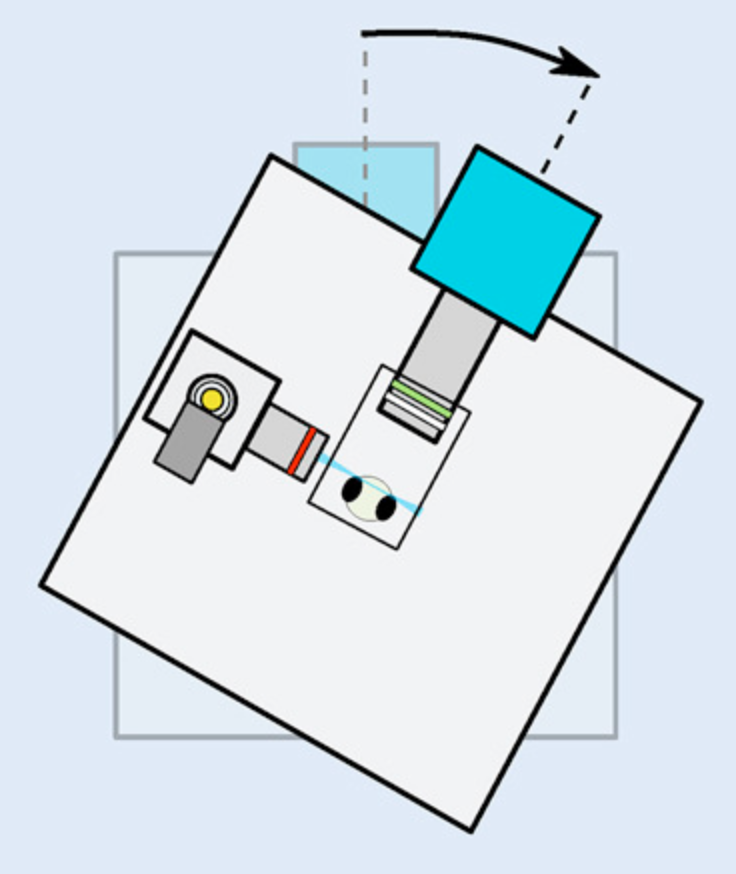 Whole-brain calcium imaging during physiological vestibular stimulation in larval zebrafishGeoffrey Migault, Thijs L van der Plas, Hugo Trentesaux, and 6 more authorsCurrent Biology, Jun 2018
Whole-brain calcium imaging during physiological vestibular stimulation in larval zebrafishGeoffrey Migault, Thijs L van der Plas, Hugo Trentesaux, and 6 more authorsCurrent Biology, Jun 2018The vestibular apparatus provides animals with postural and movement-related information that is essential to adequately execute numerous sensorimotor tasks. In order to activate this sensory system in a physiological manner, one needs to macroscopically rotate or translate the animal’s head, which in turn renders simultaneous neural recordings highly challenging. Here we report on a novel miniaturized, light-sheet microscope that can be dynamically co-rotated with a head-restrained zebrafish larva, enabling controlled vestibular stimulation. The mechanical rigidity of the microscope allows one to perform whole-brain functional imaging with state-of-the-art resolution and signal-to-noise ratio while imposing up to 25° in angular position and 6,000°/s2 in rotational acceleration. We illustrate the potential of this novel setup by producing the first whole-brain response maps to sinusoidal and stepwise vestibular stimulation. The responsive population spans multiple brain areas and displays bilateral symmetry, and its organization is highly stereotypic across individuals. Using Fourier and regression analysis, we identified three major functional clusters that exhibit well-defined phasic and tonic response patterns to vestibular stimulation. Our rotatable light-sheet microscope provides a unique tool for systematically studying vestibular processing in the vertebrate brain and extends the potential of virtual-reality systems to explore complex multisensory and motor integration during simulated 3D navigation.
